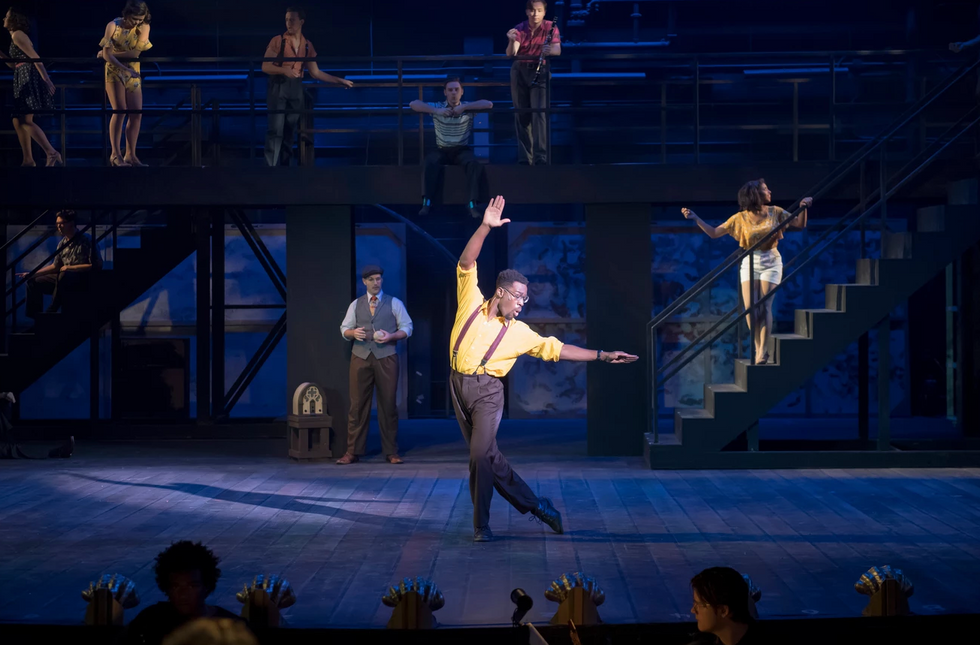What To Do If You Encounter Racism On Campus
U.S. college dance curriculums have long been criticized for being too Eurocentric, emphasizing Western techniques like ballet and modern while making culturally diverse dance classes optional (if they’re offered at all). In these academic systems that elevate whiteness, dancers of color don’t always feel welcome. Some face daily microaggressions from peers and faculty, casting discrimination and, sometimes, outright hate. So what can you do if you find yourself staring down racism in dance class?
If You Encounter Racism
Discrimination can be traumatic. If you find yourself on the receiving end, keep these four things in mind.
There is no “right” way to respond.
People react differently to disturbing situations. If you’ve experienced a microaggression, prioritize your well-being, whether this means excusing yourself from the room, asking a faculty member to address it or processing it internally. “The big problem is that most people expect the student to bear the responsibility of trying to heal and deal with the microaggression rather than the institution,” says Donna Mejia, director of graduate studies in dance at the University of Colorado, Boulder.
Your experience is valid.
When racist behavior goes unacknowledged by faculty members, dancers may begin to downplay or question the reality of the situation. “Oftentimes, they don’t even think it’s a big enough deal to say something because they’re so desensitized to the experience of being marginalized,” says Nyama McCarthy-Brown, assistant professor of community engagement through dance pedagogy at the Ohio State University.
You’re not obligated to educate.
After being the target of a microaggression, don’t feel responsible for teaching the aggressor why their action was racist. It is the institution’s responsibility to hold their students and faculty accountable. Evaluate whether or not expending the energy to educate the antagonist will drain you further.
Document, document, document.
Mejia encourages dancers to write down the experience in case they need to recall it later. Likewise, if you choose to raise a concern to the faculty, keep a record of the exchange.
Find a Lifeline

Wildlin Pierrevil in Kiss Me, Kate
Suzana Mars, Courtesy Pierrevil
Throughout Wildlin Pierrevil’s time as a musical theater major at the University of Florida, he was often the only Black student in the room. Pierrevil struggled with things like backhanded comments about how he didn’t need to work for a role because of his race, or watching his peers dress up in Ku Klux Klan robes in a student-run production. Building a support system was crucial: Pierrevil found professors of color who acted as a lifeline, attended group therapy sessions, video-chatted with friends outside of the university and processed his emotions through writing. He also tapped into virtual resources: He joined The Black Undergraduate Theatre Collective’s Facebook group, listened to Off Book: The Black Theatre Podcast and got connected with the Broadway for Racial Justice organization. “You don’t have to save the world,” Pierrevil says to other dancers battling racism. “You don’t have to be a martyr.”
Be a Better Advocate
White dancers can play a critical role in building a more inclusive environment.
1.
Break the bystander effect. When you witness racism, be willing to press the pause button, Mejia says. Rather than glossing over it, acknowledge the behavior and start a conversation. You might say, “I’m uncomfortable with what is happening here,” she suggests.
2. Listen. Learn about the racist structures that exist in the dance industry so that you can recognize when they’re at play. Ask your BIPOC peers about their experiences.
3. Cast dancers of color. “Casting is a huge issue from the faculty down,” says McCarthy-Brown.
4. Make advocacy a habit, not a hashtag. Meaningful change takes sustained engagement. “It’s about advocacy, not just allyship,” Mejia says. Take courses in non-Western forms, and build authentic relationships with dancers of color.
Remember: Racism is institutional.
The burden to challenge white supremacy, advocate for people of color and implement anti-racist policies falls on the university, not BIPOC dancers.




